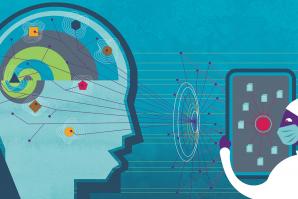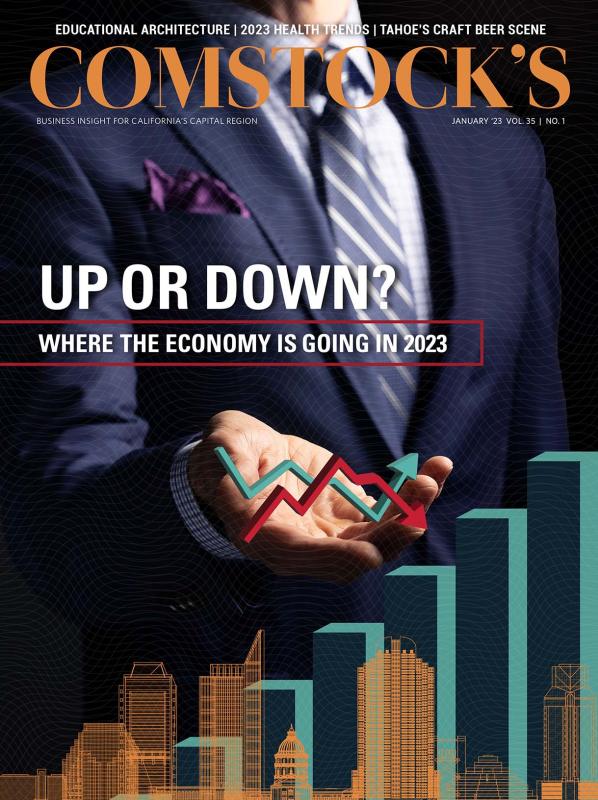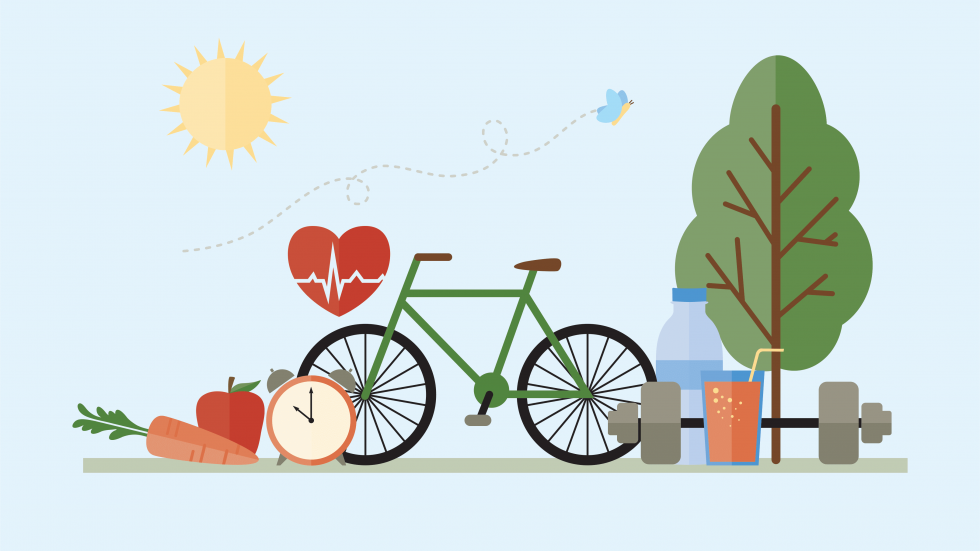In September of 2022, the Food and Drug Administration noticed a disturbing new trend: the “NyQuil chicken challenge,” where people boil chicken in cough medicine. “The challenge sounds silly and unappetizing — and it is. But it could also be very unsafe,” the FDA warned in a statement.
While it’s unclear how many people were actually using cough syrup to cook chicken before the FDA flagged the issue, Dr. Debbie Fetter, a professor of nutrition at UC Davis, points to it as a (hilarious) example of health trends gone wrong. “What really got me is how they poured the extra sauce — after it touched the raw chicken — back into the NyQuil bottle,” says Fetter with a laugh. “I was like, please don’t do this.”
It might be obvious that cooking chicken with NyQuil is a bad idea. But other health trends are less clear-cut. Intermittent fasting? Chlorophyll drops? High-intensity interval training, or HIIT? Are people even going to the gym, or are they still spinning on their Pelotons?
The booming fitness industry took a big financial hit due to COVID-19. The industry lost more than $29 billion in revenue, 22 percent of gyms and fitness studios closed and 1.5 million workers lost their jobs, according to the National Health & Fitness Alliance.
Gym growth started to see a slight resurgence in 2022, with more growth expected in 2023. Just in time for New Year’s resolutions, Fetter and local fitness experts share what they’re seeing as the most popular health trends. Some of these are legitimate and backed by science, some are silly, some are useful, and all of them are very much in vogue.
Plant-based diets
The plant-based approach has surged in popularity over the last few years, says Fetter, and she suspects the reason is that “it sounds less restrictive than a vegan eating pattern.” (She prefers the phrase “eating pattern” to “diet” as the latter word can have negative connotations.) Veganism sounds hardcore. “Plant-based” is sufficiently vague so that you might pour oat milk in your cereal, but then grill a steak for dinner. Plant-based, explains Fetter, can mean that “I’m focusing more on plants, and being more mindful about my animal consumption.”
As for the science, Fetter describes the research on vegetarian eating patterns as “associative” in nature, meaning they can’t quite prove cause and effect. But they do show that “time and time again, people who opt for more plant-based food choices have lower risks of diet-related chronic diseases,” including cardiovascular disease, breast cancer, prostate cancer and Type 2 diabetes.
High-intensity interval training
By now you’ve seen the playbook: quick bursts of intense effort, short rest, repeat. The workouts are brief and brutal. “HIIT is it right now,” says Shane Harris, fitness director at California Family Fitness. “You can be very efficient with your time and burn as many calories in an hour as you would in two or three.”
The science backs this up. “I read the original research from academic and peer-reviewed publications,” says Sally Edwards, the Sacramento-based CEO and founder of Heart Zones and Fleet Fleet stores, triathlete, and author of numerous fitness books. “There’s a lot of good benefits that come from HIIT training.”
But she offers a dollop of real-world caution. “I’m 75, and I’ve been in this space for most of my life,” says Edwards, adding that over the years she learned to follow a certain maxim: “We don’t want to kill the dumplings.”
The “dumplings,” as Edwards refers to them, are the new eager-beaver gym goers. They hear about HIIT and they give it a go. “Then they quit, because it was too hard,” says Edwards. She agrees the science is sound but says “for most people, it’s not sustainable” and instead suggests MIIT, or moderate-intensity interval training — basically HIIT but less miserable. “It doesn’t kill the dumplings.”
Chlorophyll drops
These are the drops that you squirt in water to turn it green. Some believe it brings energy boosts or other benefits, but Fetter of UC Davis is underwhelmed. “There hasn’t been any research showing much benefit to consuming chlorophyll by itself,” she says. “You can definitely get chlorophyll from plenty of fruits and veggies.”
Wearables
Thomas Jefferson used to count his steps. Using a mechanical device he kept in his vest pocket, the Founding Father enjoyed tracking his distances and gauging his progress.
Today, wearables now measure our steps, heart rate, sleep, blood pressure, hydration and calories burned. They’re so popular that the American College of Sports Medicine, which surveyed over 4,500 health and fitness professionals, listed wearables as the top fitness trend of 2022.
“People want to be tracked,” says Harris of California Family Fitness, adding that in response to customer demand, the gym launched an app that can sync between wearables and workouts.
Edwards’ company, Heart Zones, now sells a heart rate watch called the Blink. She has a theory of why wearables are so coveted — and it has to do with the culture wars. “We live in a society that doesn’t trust very much,” says Edwards. “So we’re not going to trust the medical community, we’re not going to trust health clubs.” But she figures since we need to trust something, “maybe what we trust is that I put on a wearable. It measures something, and it tells me to stand up or I need to move.”
Sustainability in food
Fetter has noticed an interesting trend. Every five years the U.S. Department of Health and Human Services and Department of Agriculture release the “Dietary Guidelines for Americans,” intended for a professional audience. “With each edition that comes out, they keep addressing sustainability a little bit more,” says Fetter. “Consumers are focused more and more on their environmental and sustainability impact, and making food choices helps with that.” Vegetarian choices, for example, tend to involve less greenhouse gasses than burgers. This is why some food labels now include their carbon footprint. Perhaps this is just a marketing strategy, but the way Fetter sees it, this is a welcome trend. “Any way that we could help reduce our carbon footprint would be fantastic.”
The shift from home to hybrid
When gyms closed during the depths of COVID-19, people started working out at home. They bought Pelotons and rowing machines, took virtual classes, and watched YouTube workouts.
Now people are headed back to the gym — sort of. “The trend is slowly flipping back to join a club, but it’s been very slow,” says Edwards, as many people opt for a hybrid model, such as working out two days a week at home, two days at the gym.
“The trend is slowly flipping back to join a club, but it’s been very slow.”
Sally Edwards, CEO and founder, Heart Zones
Cathie Apple, a local fitness instructor, is a fan of the hybrid model. “I can see the benefits of both,” she says. Sometimes it’s convenient to just hop on the at-home bike, but at times it’s nice to “have this separate place where I can focus on my workouts, and you have this tribe of people you work out with.”
Intermittent fasting
Fetter once polled her class of 600 students and found that every single one had heard of intermittent fasting, and 60 percent to 70 percent had tried it. “It’s definitely still very popular,” she says.
But trying it can mean different things. In one version you eat normally for a day and then fast the day after. There’s also the 5:2 diet, which involves normal eating for five days and then fasting for two, or the practice of “restrictive feeding,” where you only eat during certain windows every day, such as 12 p.m. to 8 p.m., and then fast the other 16 hours.
“What we see from the research is that there does seem to be some potential benefit,” says Fetter. It can “help people to reduce over-consuming certain foods, leading to better energy balance,” as well as improvements in cardiovascular risk factors. She cautions that it might not be right for everyone — especially if there are underlying health conditions, or a history of eating disorders — so the fasting-curious should first consult with a doctor.
Functional workouts
Harris says that most people do a mix of cardio and strength training when they exercise — maybe 30 minutes on the treadmill and then 30 minutes lifting weights. This is changing.
Many of the gym members — and nearly all of the trainers — have switched to “functional training” such as sled pulls, box jumps and medicine ball slams. These exercises combine strength training and cardio. Harris says functional training has become so popular the gyms are scrapping some of their old cardio machines to make room for more turf, functional areas and “space to jump around in.”
The internal shower
Last summer, a viral TikTok trend propagated a recipe involving water, lemon juice and two tablespoons of chia seeds. Drinking it creates a “full-body cleanse” — in other words, a homemade laxative.
“Did people necessarily need to be drinking this concoction to help them go to the bathroom? Absolutely not,” says Fetter, chuckling. “There are a lot more enjoyable ways to meet your fiber needs.”
Tabata
Tabata is a subset of HIIT that became more popular in 2022. You do 20 seconds of an ultra-intense burst, then 10 seconds of rest. Repeat. (Maybe collapse.) “The science is there. The science is real,” says fitness instructor Apple. But she offers a caveat.
Squeezing the true benefit out of Tabata, says Apple, must require “a movement or exercise where you actually go all-out.” This can be a sprint on a bike, a run, or “something so intense it gets your heart rate up.”
As Tabata has grown in popularity, Apple has seen people try and apply the technique to exercises where it doesn’t make sense. “It’s silly when people are doing a Tabata plank,” says Apple, because a plank should be held as long as possible, and 20 seconds won’t cut it. “It needs to involve intense movements.”
Pickleball
The Sports and Fitness Industry Association named pickleball the nation’s fastest growing sport for two years in a row, and Sacramento is no exception. Harris of CalFit says that when they sent a request for feedback to its members, the response was essentially: “Bring us pickleball!” So they converted under-utilized tennis and basketball courts to pickleball in six locations, and Harris says the sport has “been a huge driver for us.”
Recovery devices
The old-school mentality of recovery, says Harris, was to only think about it when injured, or perhaps at the end of workouts. “Recovery is more preventative now,” says Harris, adding that both trainers and members are using recovery equipment like hydromassage, compression sleeves and massage guns — often pre- and post-workouts.
Is the efficacy of all of these devices 100 percent backed by science? That’s unclear. But as Harris says, “a lot of it is now just for mental health.”
Mental health in exercise and food
In past decades, says Harris, most people worked out because they wanted to look better. Once again he’s seeing a shift. “Now it’s, ‘How do I feel better?’ There’s more emphasis on mental health.”
Fetter, the UC Davis nutrition expert, sees the same trend with food. “There’s a lot of focus on the connection between mental health and nutrition, especially with the Gen Z population,” says Fetter. Most of her students fall in this age range, and they ask questions like, “What foods can I eat to help me feel better, or manage anxiety?”
The short answer is “seeking out whole foods whenever possible,” says Fetter. While the science and research is not a slam dunk, she says that certain foods like berries, omega-3 fatty acids and whole grains “have been linked to improved cognitive function.”
And finally, the most important trend that’s not really a trend:
The timeless trend of whatever works
“We’re all looking for the hack, the one thing, the magic bullet, that’s going to take care of everything,” says Apple. But there really isn’t a magic bullet. The fads are not what matter. When clients ask her “What’s the best exercise?” her response is “Do the one that you will do,” because what counts is doing something and continuing to do it. “Consistency is more important than intensity,” says Apple. “Consistency is more important than anything.”
The same goes for nutrition. “Food is food at the end of the day,” says Fetter. She acknowledges that some foods are healthier than others, but suggests it’s good to remember that “food is one of the best parts about living life,” so we should “give ourselves permission to enjoy and cultivate our eating pattern.”
Ultimately, while the nutrition fads will come and go, Fetter says it’s hard to go wrong by sticking with the tried and true: fruits and vegetables, whole grains, lean proteins, healthy fats, and limiting your intake of added sugar, processed food and alcohol.
She knows that advice isn’t trendy or sexy. But that’s how health works. “Everyone seems to be trying to find a magic pill or magic formula,” says Fetter, but in the end, “nutrition is really boring when you think about it.”
–
Stay up to date on business in the Capital Region: Subscribe to the Comstock’s newsletter today.
Recommended For You

Self Care A La Carte
The pandemic spurred the Capital Region’s wellness economy to become more widespread and accessible
Wellness is not just a state of being; it’s a perpetual pursuit,
a form of prevention and an entire economy. Many businesses
in the Capital Region are providing ways for people to foster
their own relationship to wellness through progressive services,
treatments and practices.

Going to Extremes
Endurance athletes push their bodies to the limit — and pump money into the regional economy
Extreme athletes see what they can accomplish, however improbable
— like the 100.2-mile ultramarathon Western States — and use
their hobbies to contribute to regional economies.

Restoring Balance
Medical herbalist Sage LaPena shares traditional knowledge and health education
As the practitioner for the Sacramento Native American Health Center’s Healing Ways Program, Sage LaPena helps patients get control of their conditions through a holistic approach.

Can Artificial Intelligence Improve Mental Health?
After the disruption of 2020, the push for more collaborative affiliations has become even more urgent. At the core of this evolving model is technology.

The New Age of Aging
Developers in the Capital Region are building new models of senior housing — in preparation for the ‘silver tsunami’ to come
As aging baby boomers approach their golden years, new senior living projects are springing up to accommodate to increased demand and offering a new take on “aging with grace.”

Older, Better, Faster, Stronger
Capital Region innovators build new paths to wellness and longevity
Doctors, researchers and trailblazers are exploring how
to use both tried-and-true methods and new tools to
improve physical and mental health as we age.





